-
Posts
2,993 -
Joined
-
Last visited
Content Type
Forums
Profiles
Store
Gallery
Articles
Blogs
Events
Downloads
Posts posted by Jotronic
-
-
Alright, thanks for the helpful paragraphs... So what does transplanting hair for 'blending' actually do? Does it help in case some of my normal hairs die or something? I'm not really sure why I'd have to go deep into my normal hair and not just slightly over it.
Keep in mind that the amount of blending varies from one patient to the next. Some patients require blending a centimeter or more into the existing hair, some patients need half a centimeter and this will dictate the number of grafts needed. Also, don't forget that we're dealing with photos so real life inspection will reveal more. I'd bet that 2000 or more would be needed though simply because I've seen too many cases like yours to think otherwise.
This guy seemed to get a similar amount to mine at 1500 grafts and his results didn't look too bad.Well, with respect to the patient and clinic, we really have no idea how it looks because the hair is flopped forward over the actual hairline. You see the shape and it's fine, but you have no idea what the actual density is because it is not pulled up like it was in the before photo.
Now, for a comparison, look at the photo of this female patient. Just over 2500 grafts were used and you can see the density because the hair is pulled back. The total area covered is fairly similar if not smaller than the area shown in the example you pointed out.


Anyway, I hope my point is clear. There are many factors that go into hair design and it can't be quantified by a simple graft calculator. And remember, if you can't see the hairs in the hairline, you're not seeing the hairline;)
-
Scratch that about the tests and hair loss history for females in your family. We posted at the same time so I did not see that you are transgendered. The rest still holds true.
-
GodAwfulLuck,
I would put Jotronic's advice on the same level as any of the top hair transplant surgeon's in world, he knows what he's talking about and is giving you very solid advice.
I'm flattered, thank you very much:)
GodAwful,
I was scratching my head for a moment because I thought maybe you were male as I assumed you were female. I'm glad my glance at your profile confirmed it, lol!
I think that you need to forget the #'s per cm2 because that will drive you nuts and it isn't really accurate anyway. Coarse caliber hair can get away with lower densities in some cases but as I mentioned earlier fine hair needs more hair per cm2 for density. And your comments about your existing hairline make sense, and I see what you are talking about, but there still does not appear to be any inclusion of native hair blending. This really is important because if the hair is not blended into the native hair then the continuity of the result can be compromised. As Spanker said, a lot of his work was blended into his existing hair. One must not just drawn a line between bald and non-bald regions and stuff some hair in. There has to be a blend so that under no circumstances the result will be compromised.
For females, the most important part of their hair is the hairline as it differentiates their hair from males and the female hairline design must be more aggressive so that it is natural. "Aggressive" does not mean going crazy, it just means temple closure like women should have. Height is relative as well and can be kept moderately high while maintaining naturalness but to be diligent I'd have to see proper profile photos (with hair puled back) to give more solid advice. Also, is there a history in your family of female hair loss? Have you had any tests run to see if your iron or thyroid levels are normal? If you have no loss or thinning anywhere else then your levels are probably fine as they are usually attributed to generalized female diffused pattern alopecia.
-
Well, your photos do not show squares in the area of your existing hairline that is thinning...

The areas above your squares almost doubles the total space needed to be transplanted. Granted, the density won't need to be as high as the frontal bald zone but the blending into existing hair is important and should be considered when making a plan.
-
At least 2000, maybe even a bit more, as you have fine hair and fine hair needs to be placed at higher densities since the hair shaft is smaller in diameter. You also have to have density that blends well with the non-thinning hair behind.
-
Here is another shot to show the density and the area of placement. It is clear to see how Dr. Hasson blended into the existing hair so that the result is more natural.
 [/img]
[/img] -
Joe - What is your opinion about using SMP for thickening of existing thin hair? Do you have any photos that you can share from some H&W cases where SMP was done for a thickening effect?
My opinion is that it is less effective cosmetically than the shaved head option. It works but it is a minor improvement compared to the shaved effect which is a major improvement. Each case is different and it depends on how much you get done.
I do have pics but I'm reserving any further SMP pics for our new website that will be launching in the next few weeks.
-
James,
Thanks for your comment.
NYCHair,
Hi,I was under the impression that H&W required shaving the recipient site, but it appears from the pictures in this post and the other recent ones, that this is not the case.
We do, we just don't shave a lot if there isn't a lot to shave to begin with. You can see in this overhead image where the grafts were placed. In a week the redness was mostly gone and the scabs had disappeared. The only thing left over were the stubbles and if one were to grow their hair longer it could be swept forward like a Caesar cut to to cover the recipient zone.
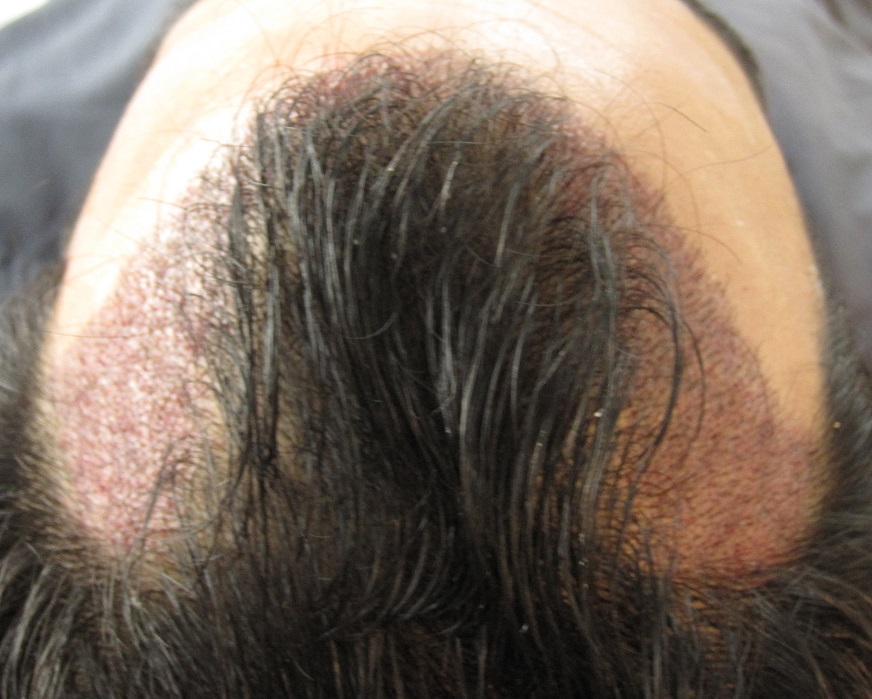
-
SMP is not a sham. The execution, technique and ultimately how it is represented is up to the individual clinic that offers it and how they go about this may or may not qualify as being a sham but the technique itself is not a sham.
-
Shane,
What exactly is approximately 1000 grafts in each side supposed to look like on a patient that is between a NW2 and NW3? If you look at the distribution the grafts were blended into his existing hair. Not every patient is looking for a massive change and with patients like this there isn't a massive change to be had. It is minor and subtle but his face is framed better with a result that is completely natural.
Initial post updated with video. Video link is copied here as well...
-
Good to see you back, Bonkerstonker!
-
For the first time Hasson & Wong will be in Chicago! Our U.S. rep Mike Ferko will be in Chicago from October 15th to the 19th. He will discuss with you your hair restoration goals, describe how we perform our procedures and answer your questions about our practice.
To register for this even please click the following link.
About Hasson & Wong Hair Transplant Clinic - Hasson & Wong
You can also register by calling 1.800.859.2266 or email info@hassonandwong.com.
-
I do not wish to hijack this thread about Dr. Rahal but I feel compelled to address the issues brought up about H&W so there is no confusion.
Undermining is only part of the equation and is not such a major requirement as you may think. We have several little "tricks" that we perform but basically it comes down to taking the strip from the correct region, constantly gauging the tension and taking the time to line the edges of the wound properly with the least amount of tension. Removing the strip in sections is important as is varying the width of the excision based on the tension in the immediate area. The time it takes for us to remove a virgin donor strip is between one hour and one and a half hours (depending on how much we are taking).
Repair cases can and do take longer depending on the amount of pre-existing scarring we run into. Doing strip properly takes a lot of time, a lot of knowledge and experience, and a lot of care in order to do it right.
-
This 32 year old patient came to see Dr. Hasson about one year ago to discuss his recession and how it was affecting him. The temples were experiencing too much recession for his comfort level and he wished to establish a stronger frame for his face by creating new temples that represented of more of a natural shape for adult males.
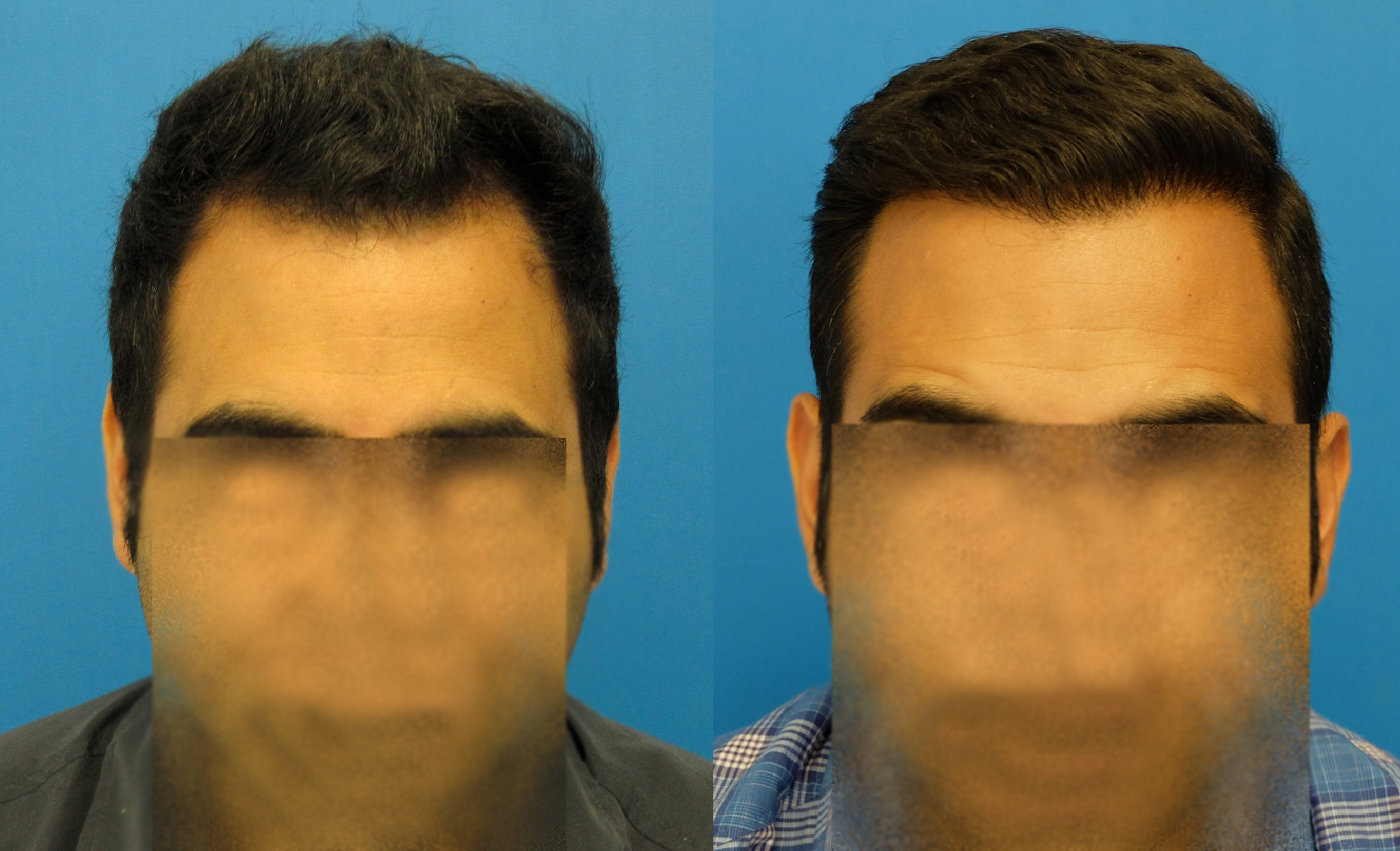
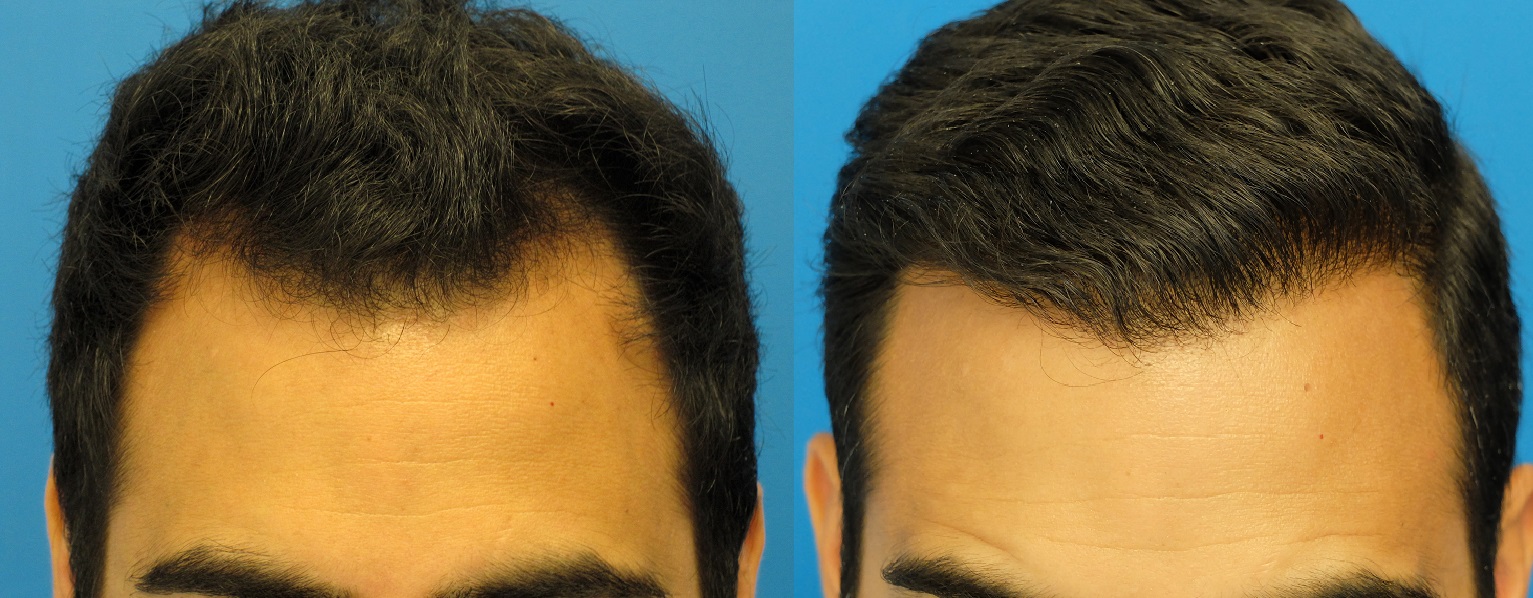
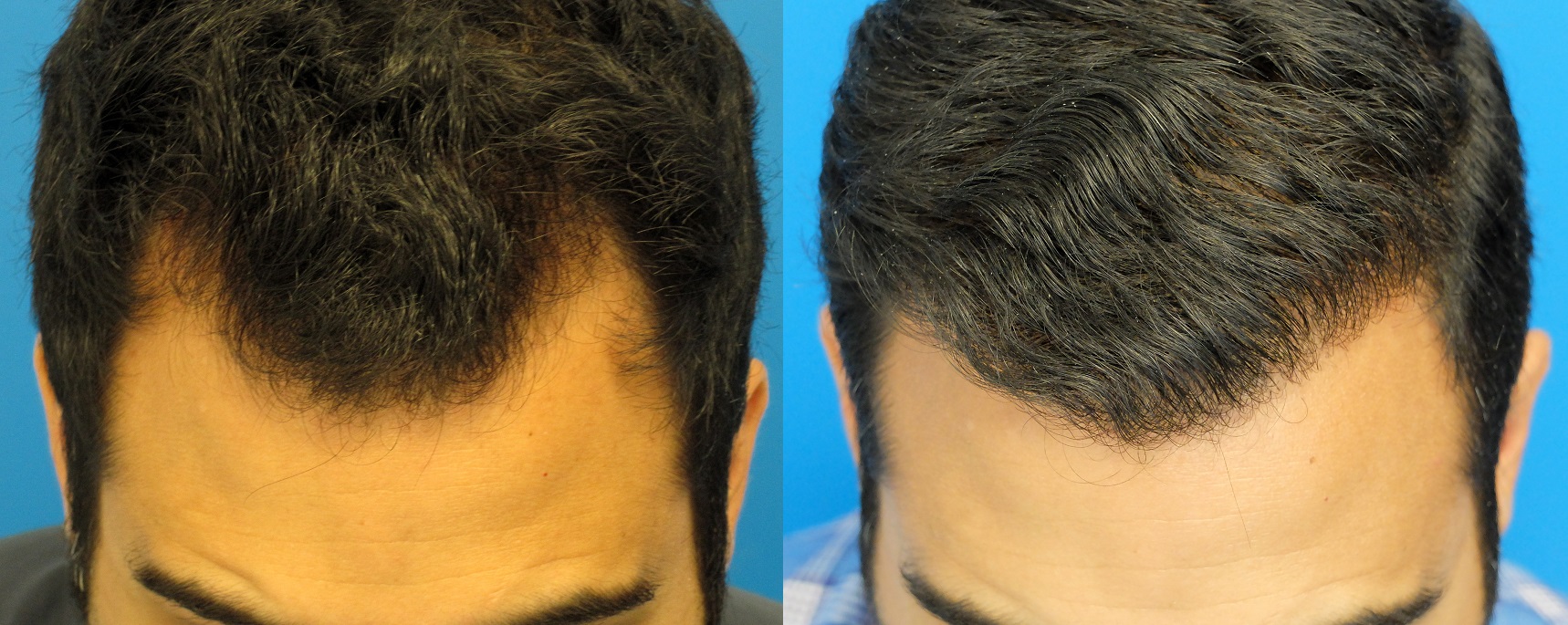
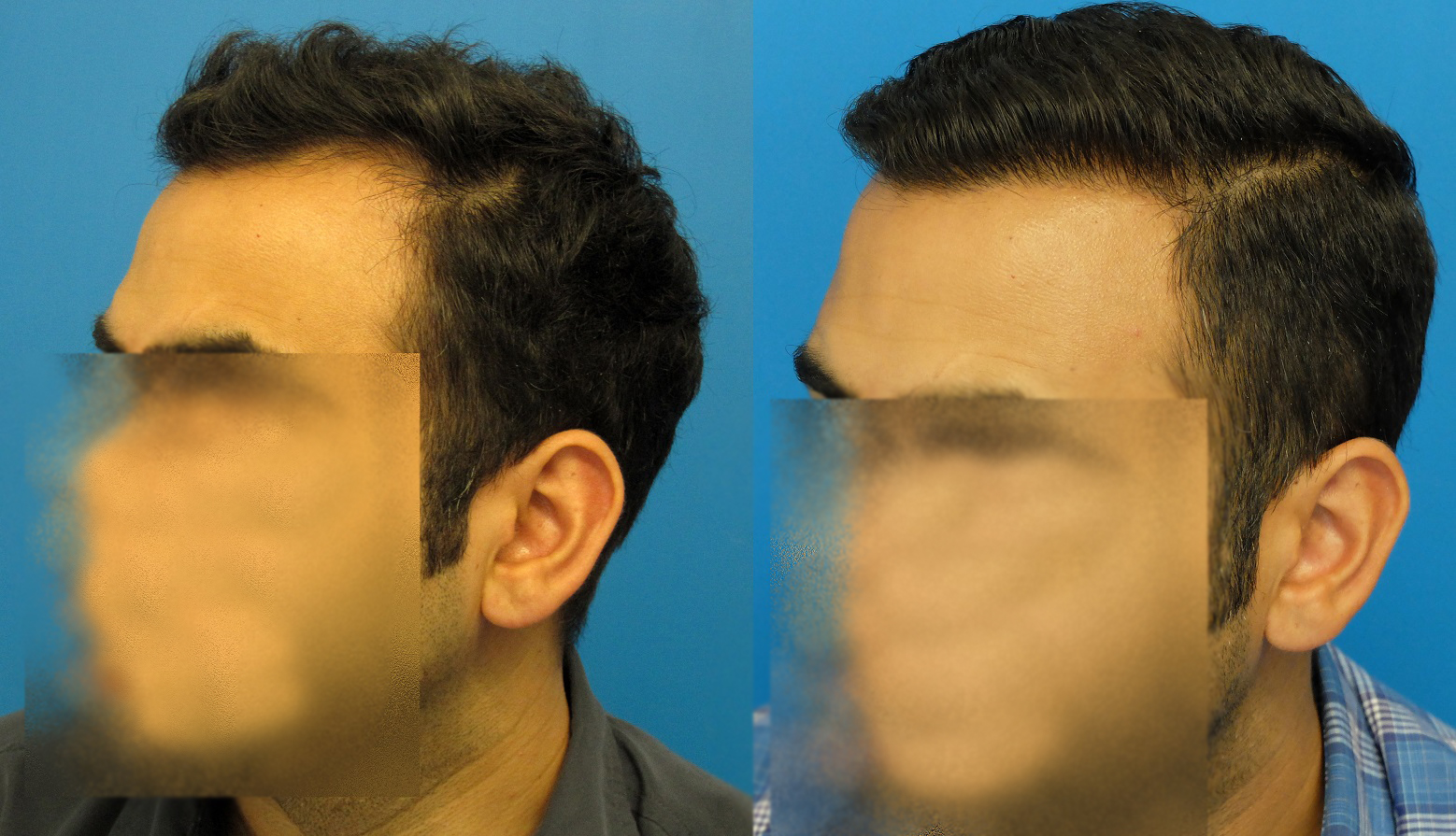
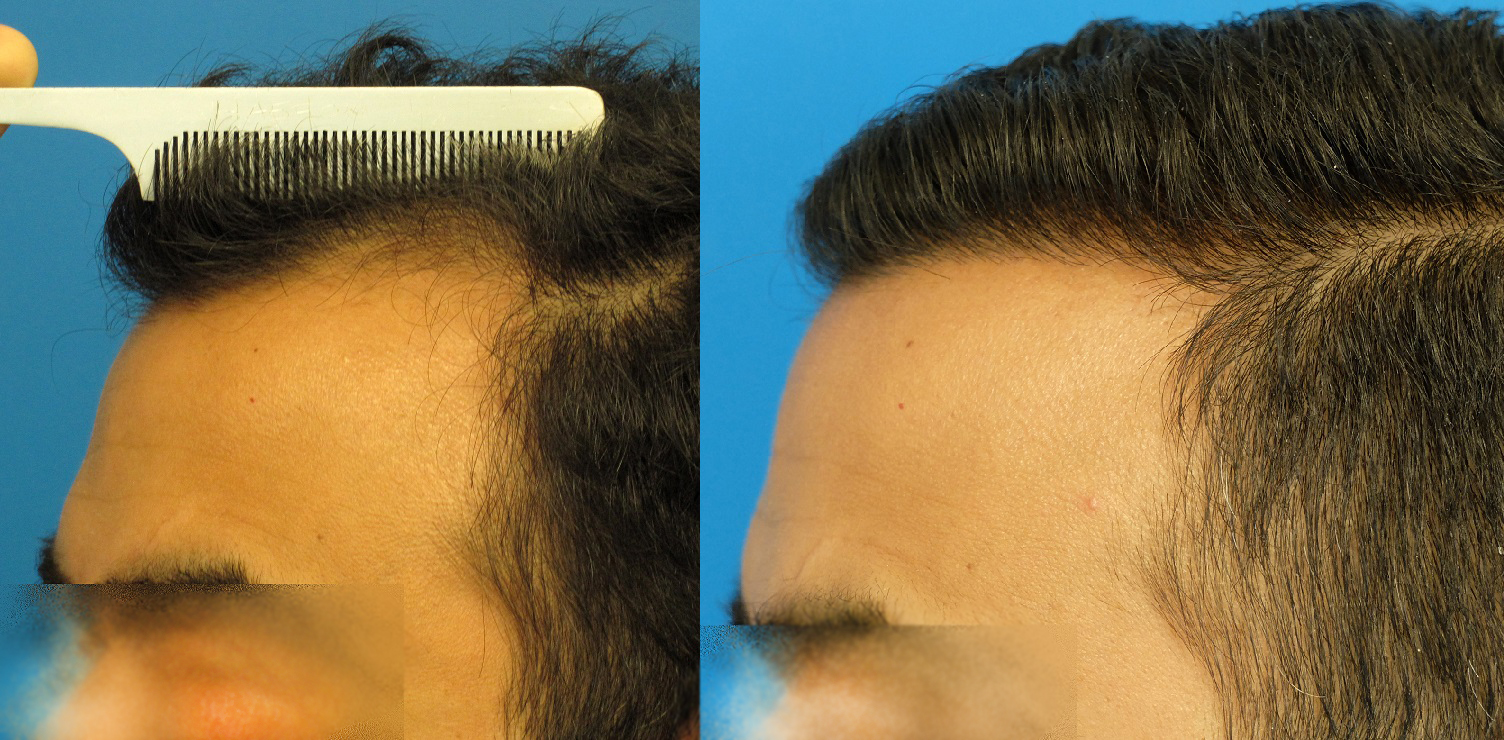
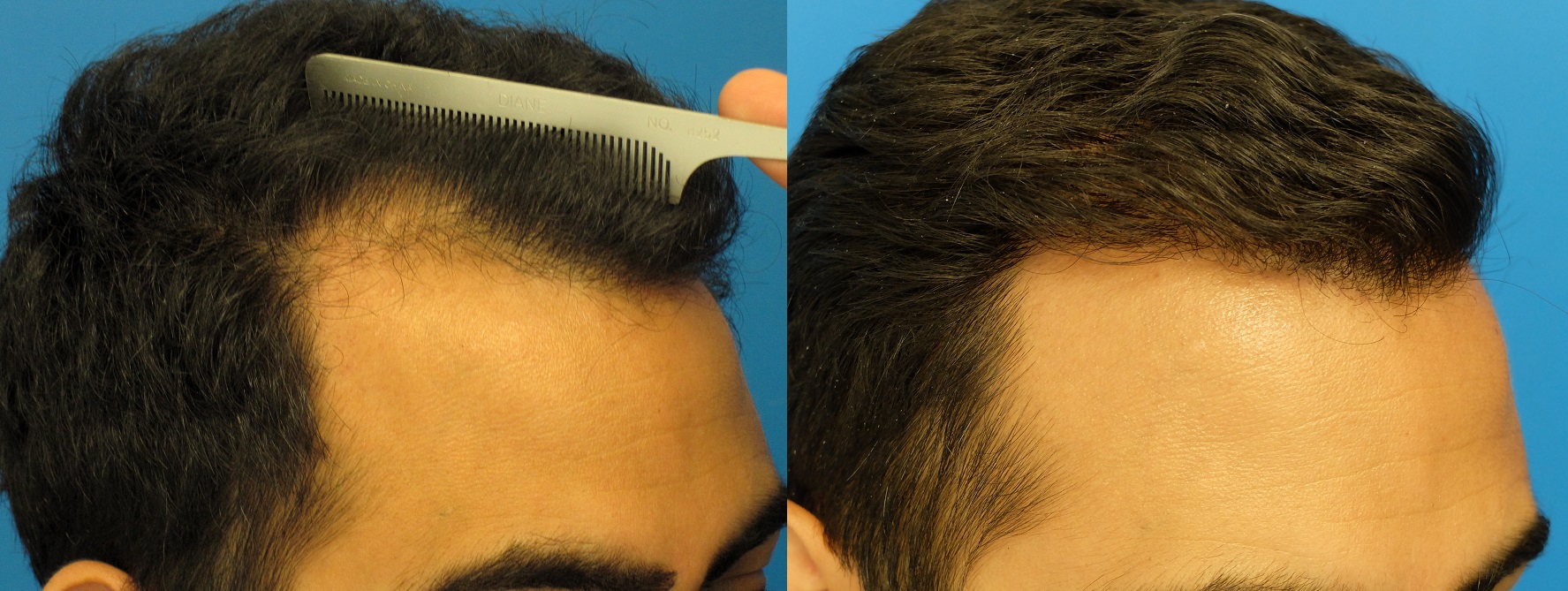

-
This local female patient presented with recessed and scarred temple zones due to previous facial plastic procedures. She asked Dr. Wong to fill these areas to cover the scarring and to restore a feminine hairline. Very little work was performed in the frontal hairline with the majority of the grafts placed in the overall temple zones from the temple peak down into the temple point and the supporting areas behind the temple lines.
2955 grafts were transplanted by Dr. Wong and his team in one procedure for the result shown below.
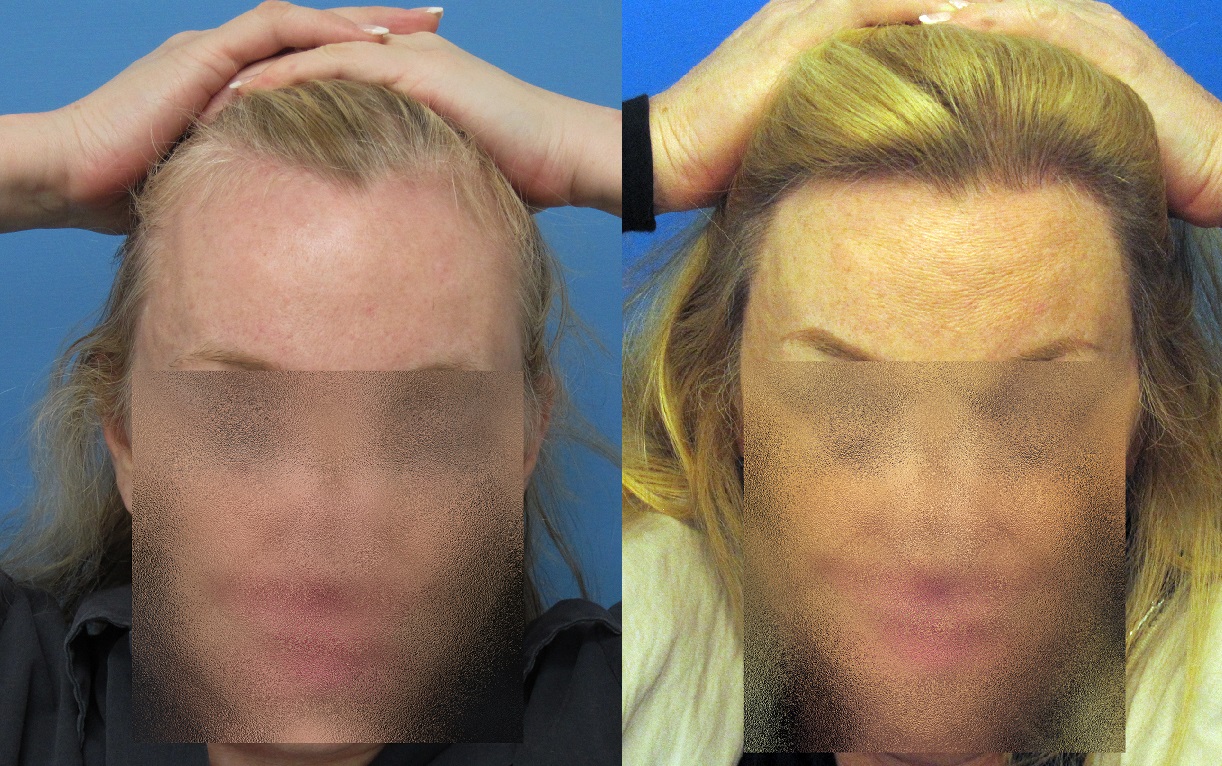
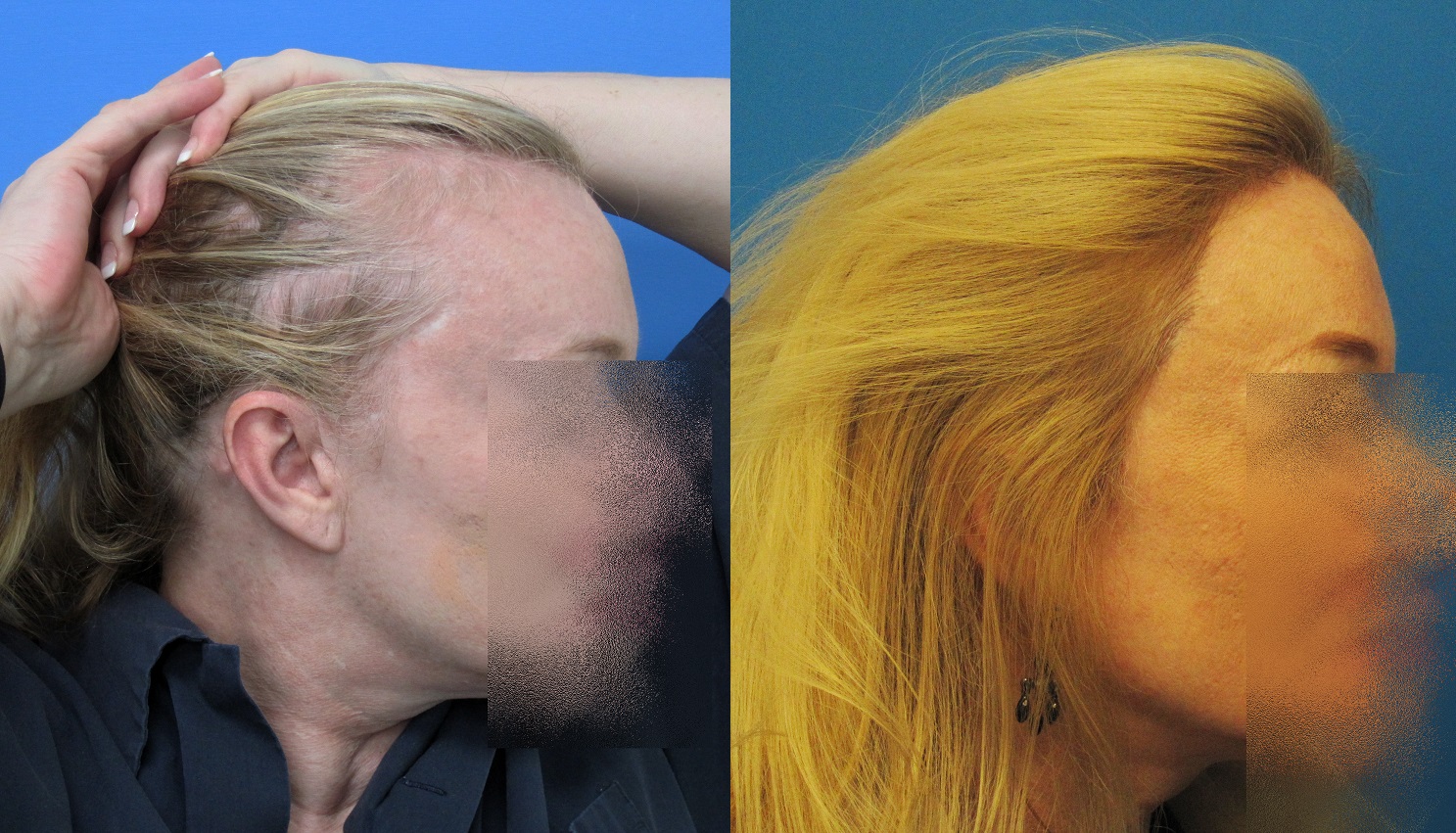
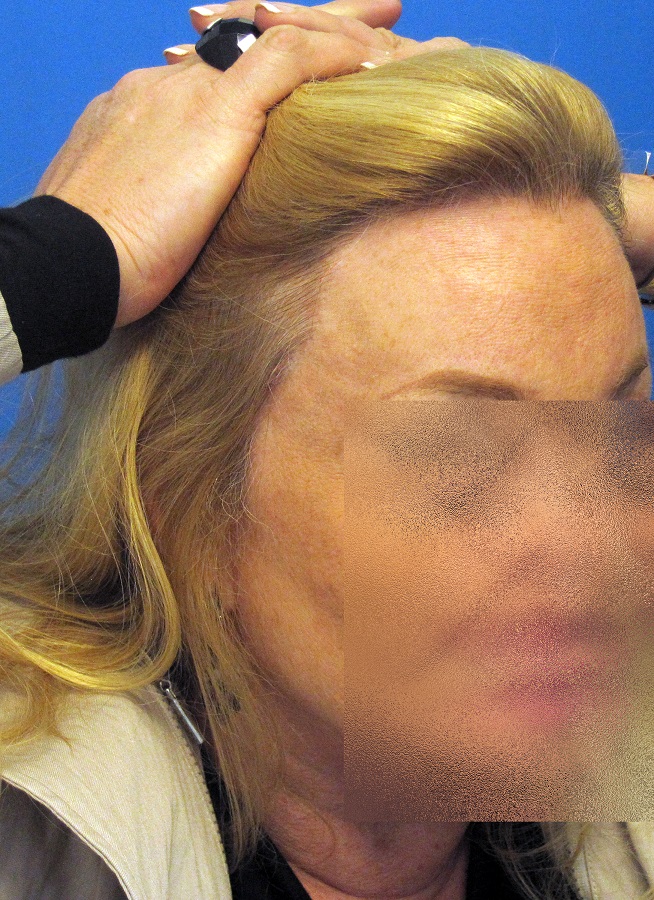
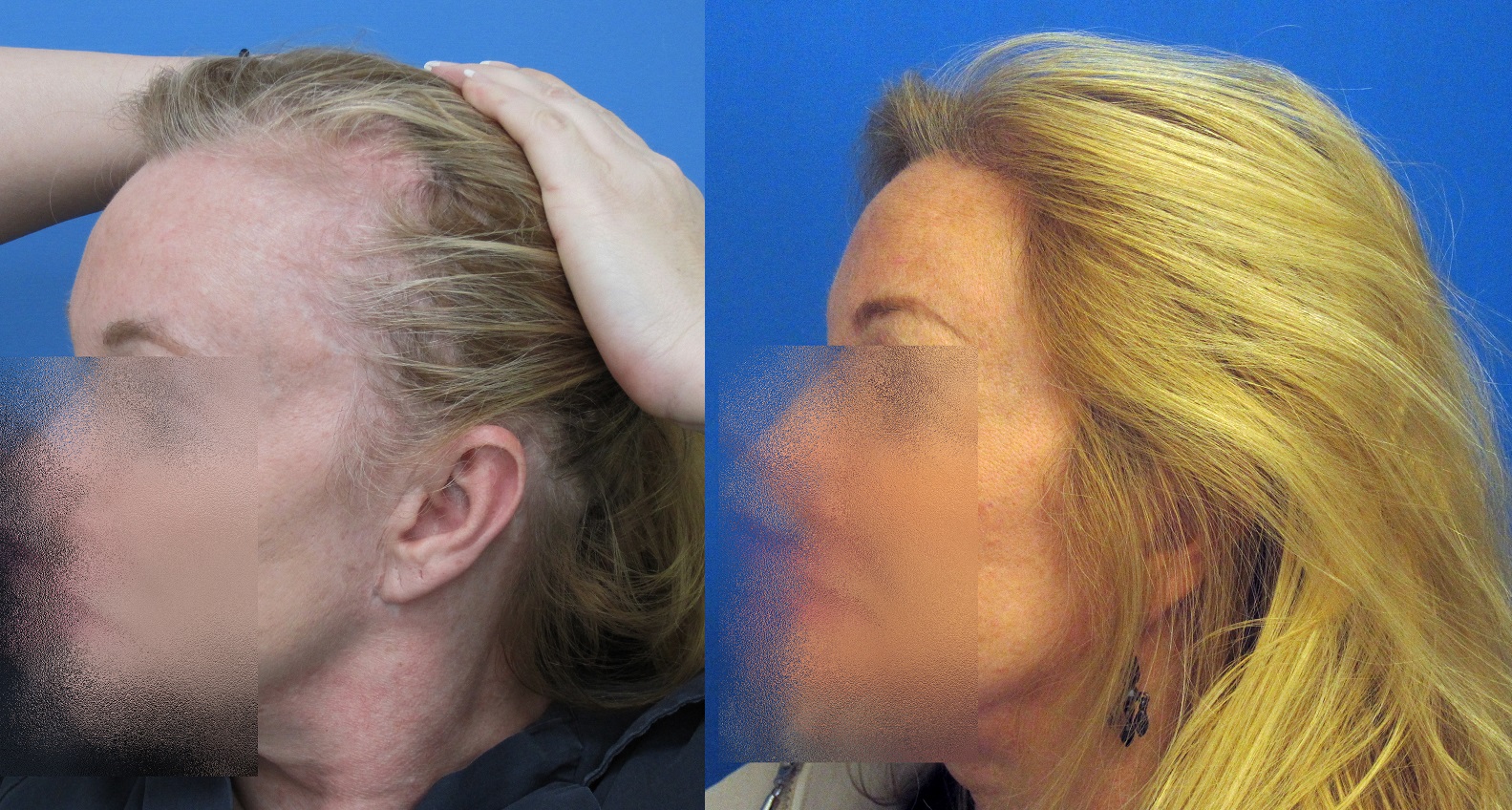
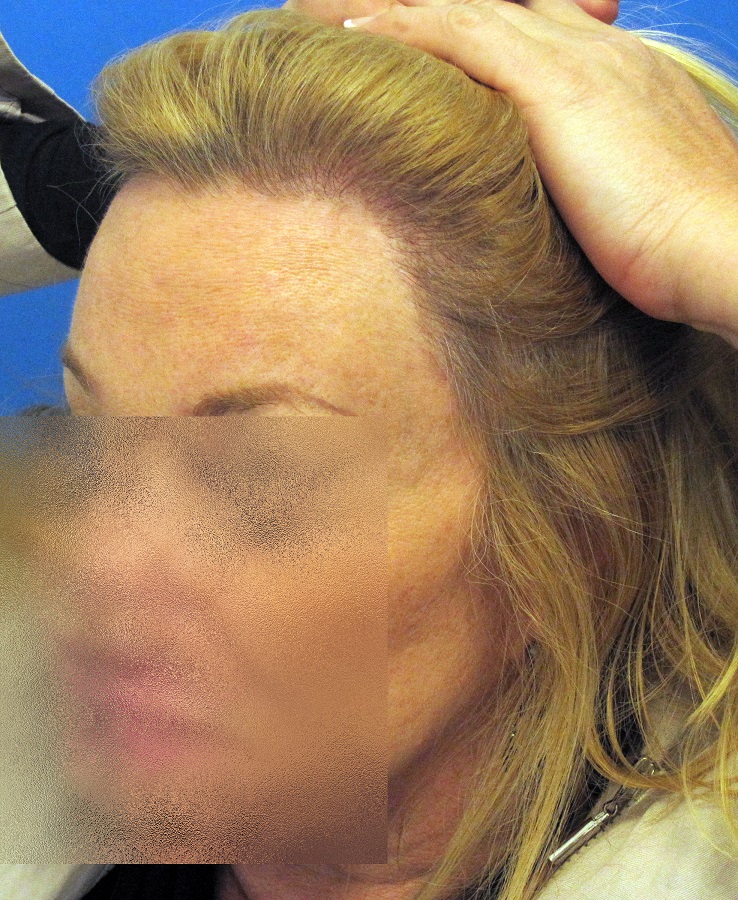
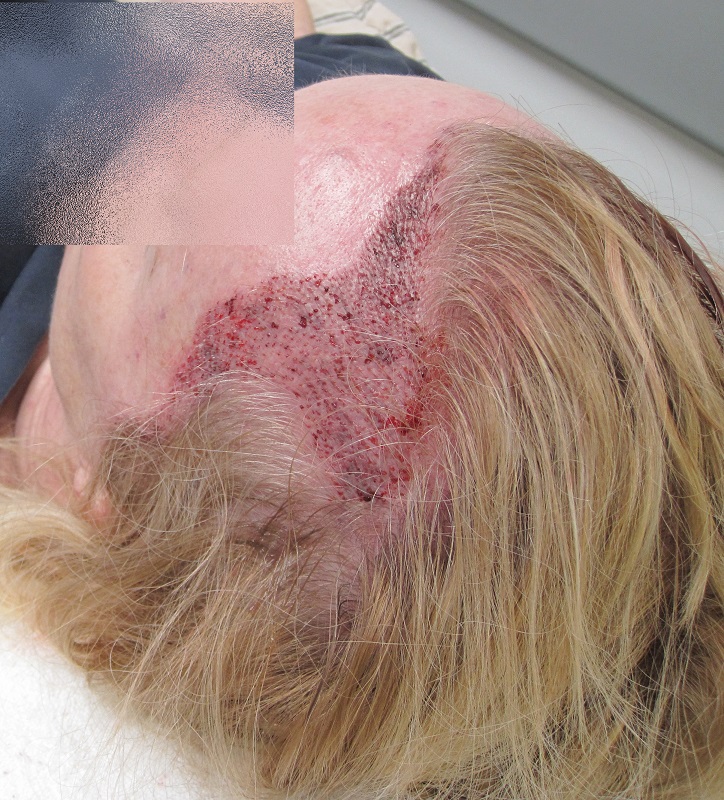
-
Chrisdav,
We can only hope:) Of course, we've been doing very detailed comb throughs in HD video for years now. This should be standard requirements by patients when clinics post results.
Thank you all for your comments.
-
Temple points are most definitely affected. In most people, the right side recedes more than the left and as your hairline recedes the sides recede as well. This is not universal but it is typical.
However, I don't think your temple points are in need of any work. They are a bit thin but they are still cosmetically viable and I think they should be left alone.
To be clear, the area marked in blue is your temple point. The area in red is your temple proper.

If you are referring to your temple proper then I can see where some work would be justified, however, to answer your question "Should I consider transplant for the temples?"; Only you can decide whether you should or should not. We are here to only tell you if you are a candidate if you so decide to do something about it.
-
We're back in New York, September 24 to 28. You'll meet up with our representative Mike Ferko and he'll explain our procedure and answer your questions about Hasson & Wong.
To arrange for your consultation you can register online at
About Hasson & Wong Hair Transplant Clinic - Hasson & Wong
Or, email info@hassonandwong.com or call 1.800.859.2266
-
Thanks for the comments, guys. Here is the HD video for this patient. It doubles as an educational video too.
-
This 25 year old local patient presented with moderate recession in the temples so he was in need of hairline strengthening that would allow for a stronger frame for his face. 2249 grafts were dense packed in one procedure for the result shown at 11 months post-op. The patient has been on Proscar since before the procedure.
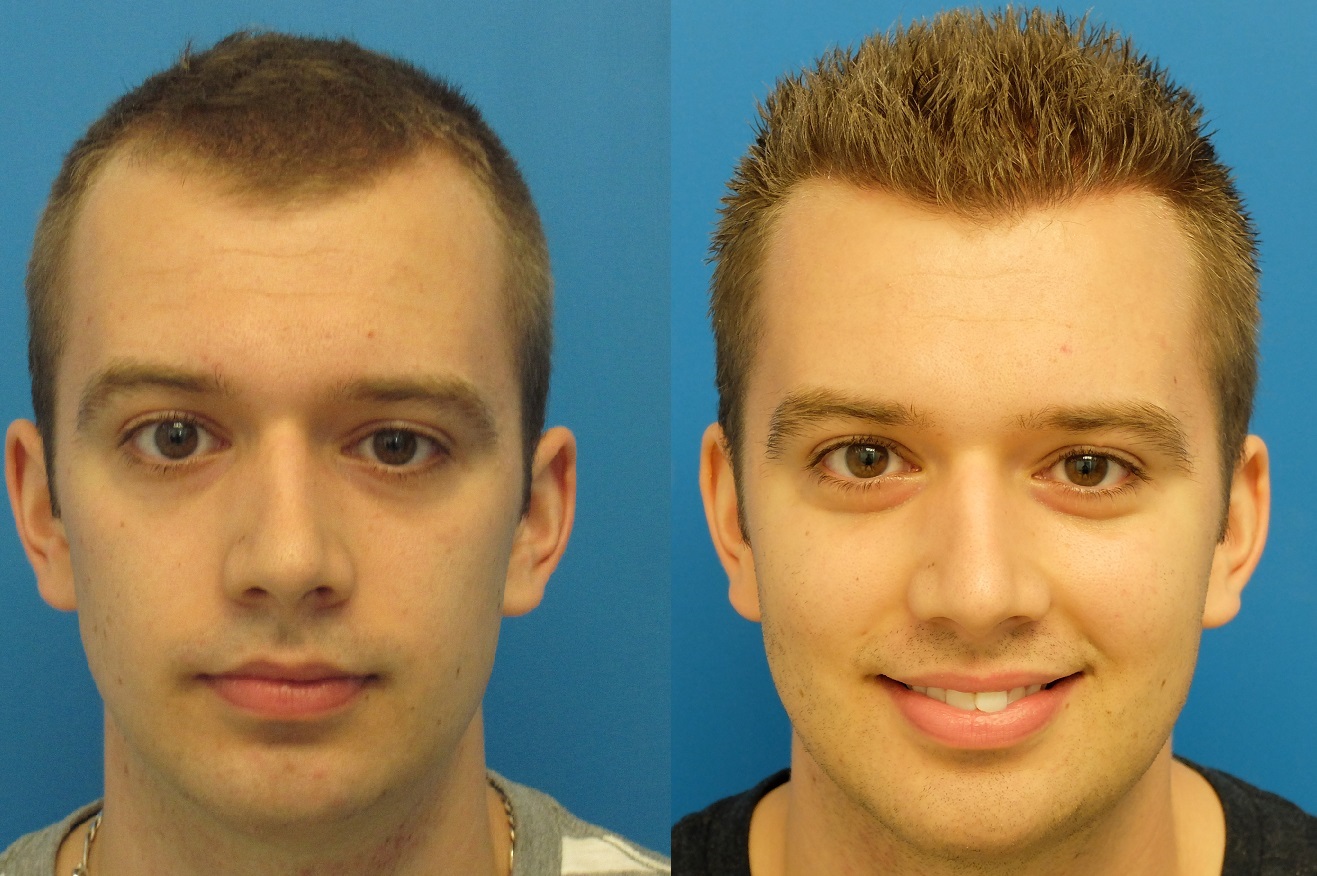
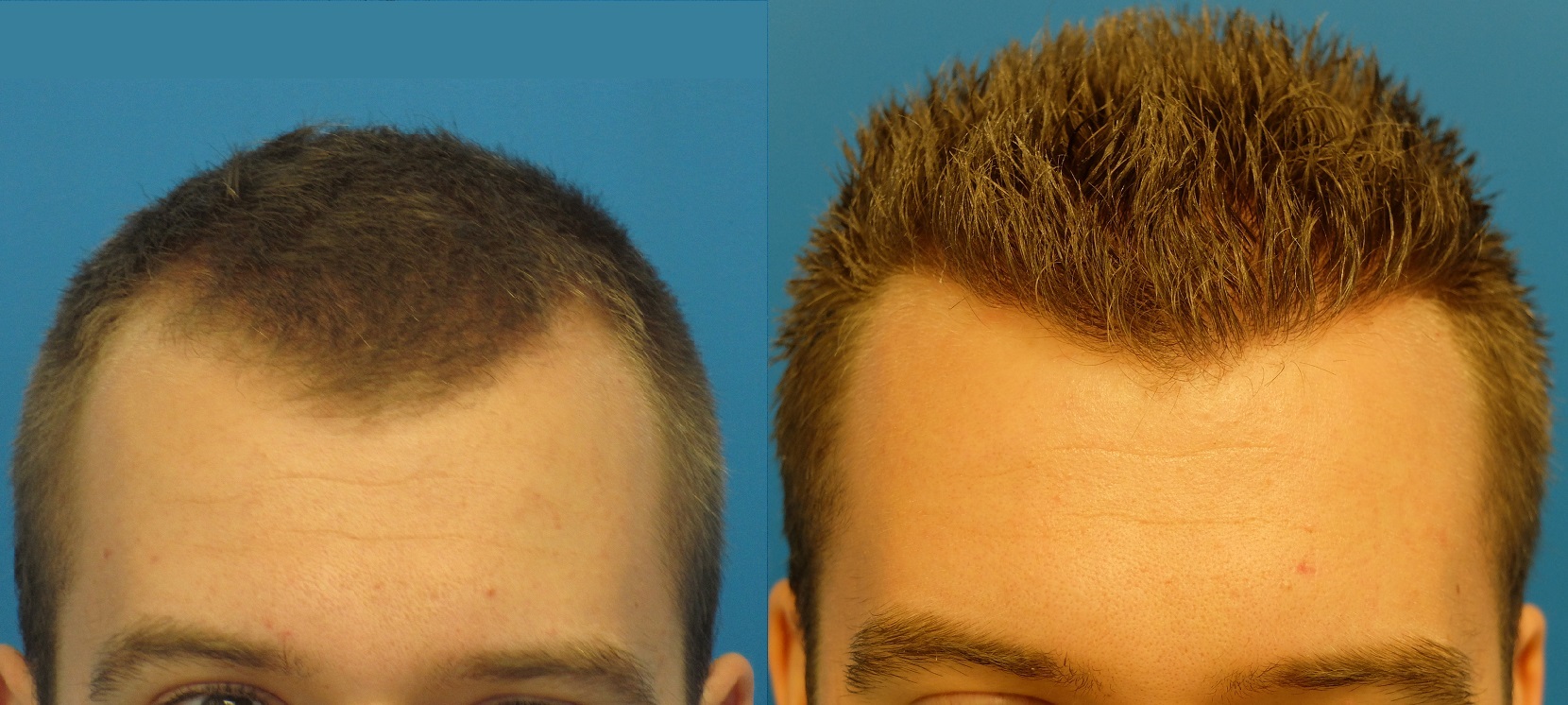
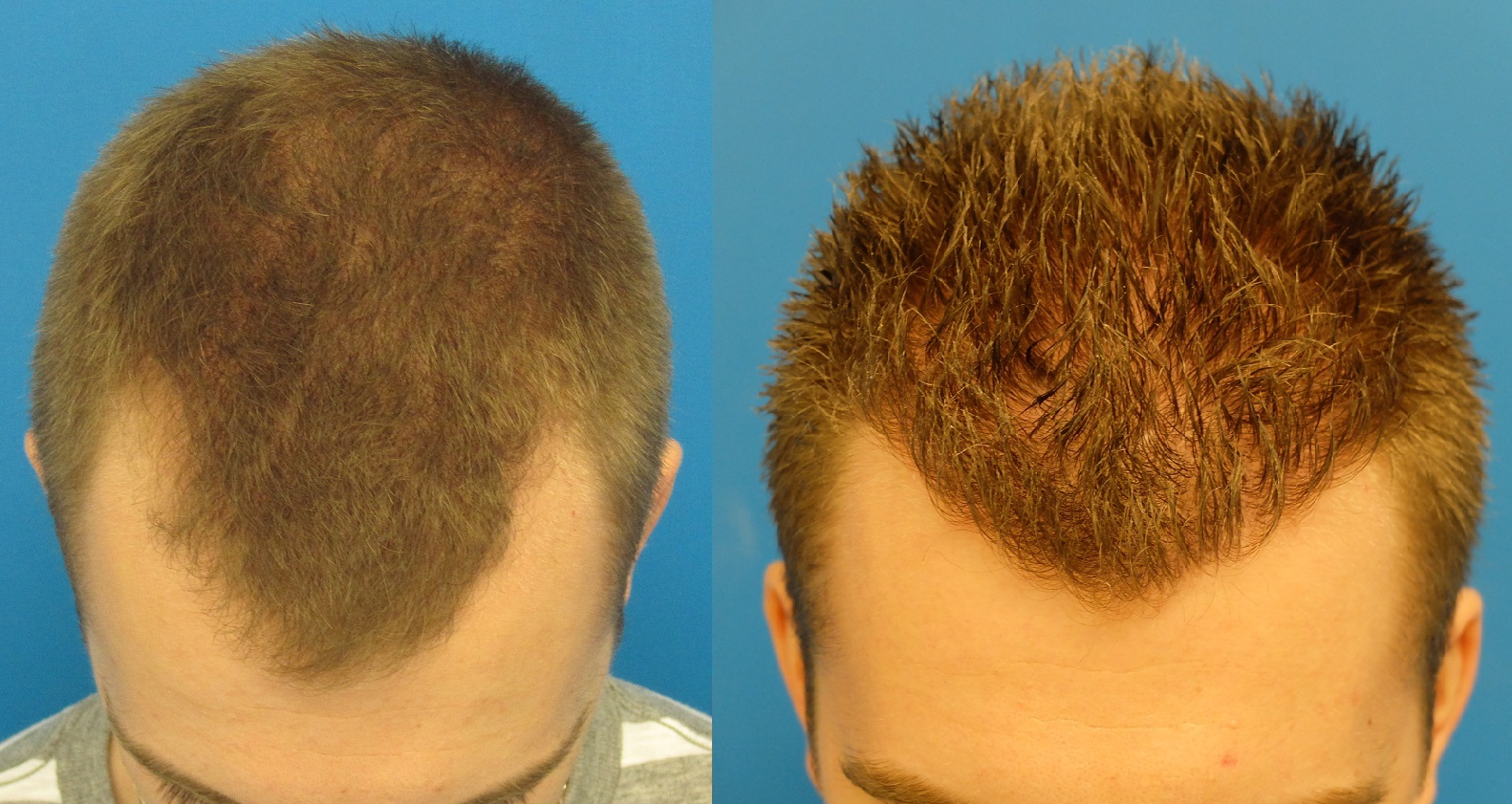
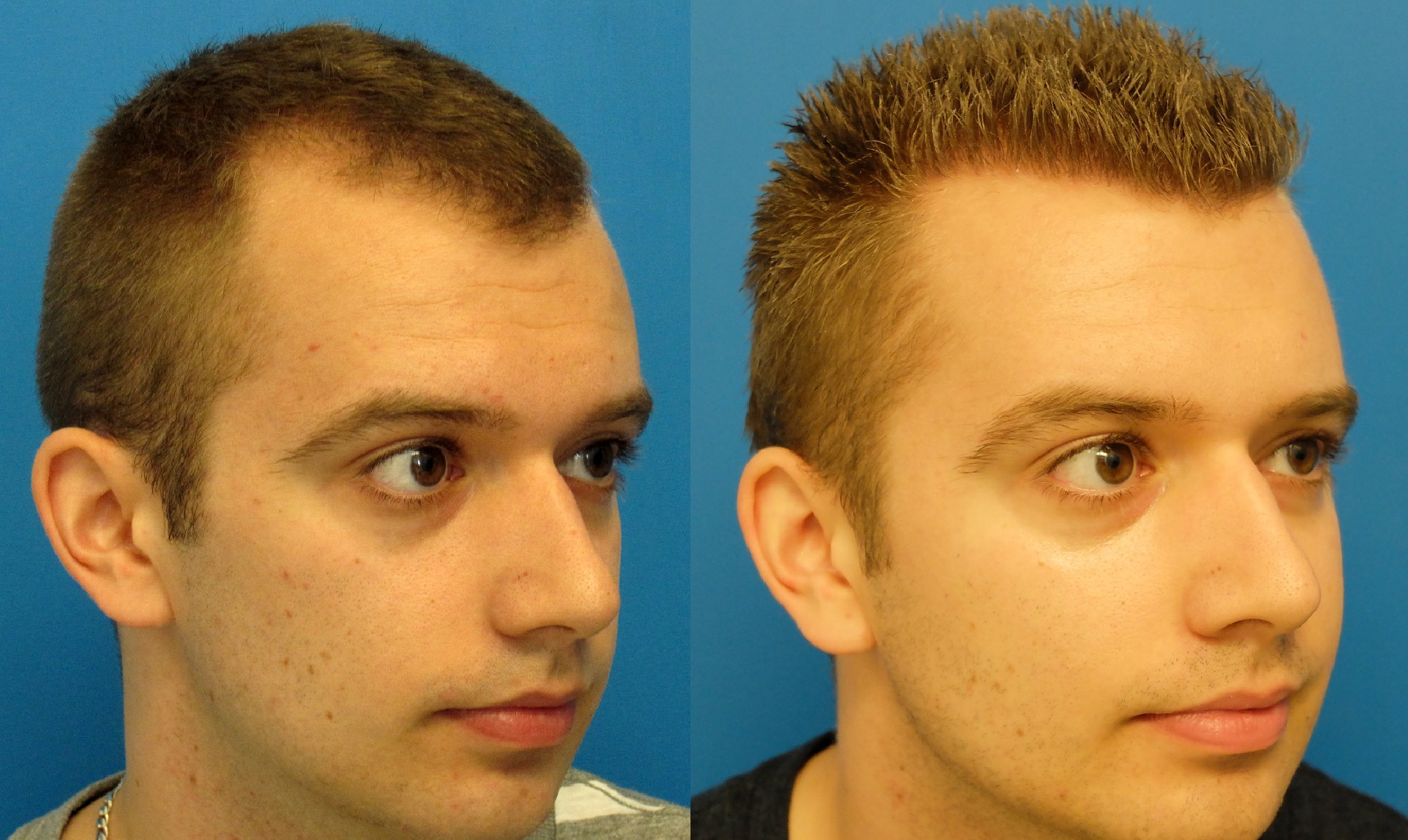
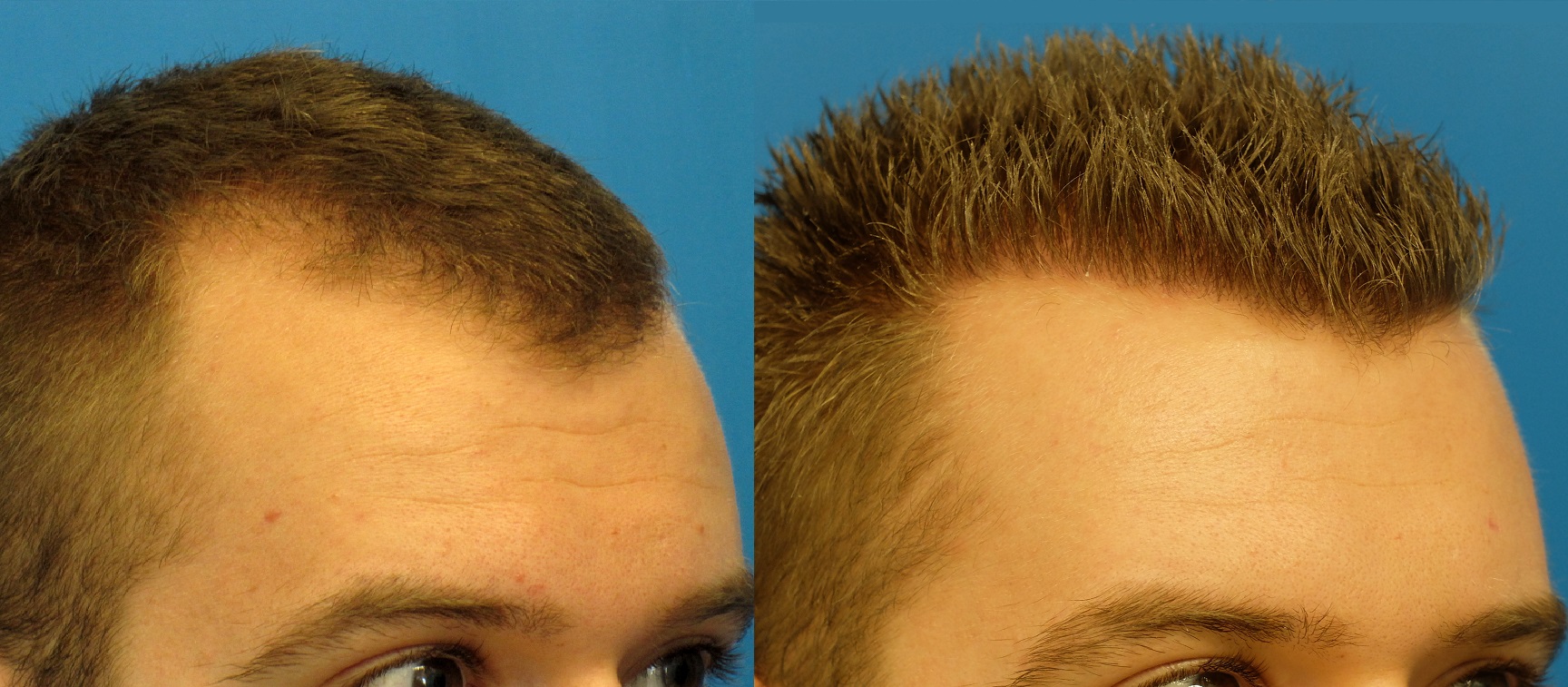
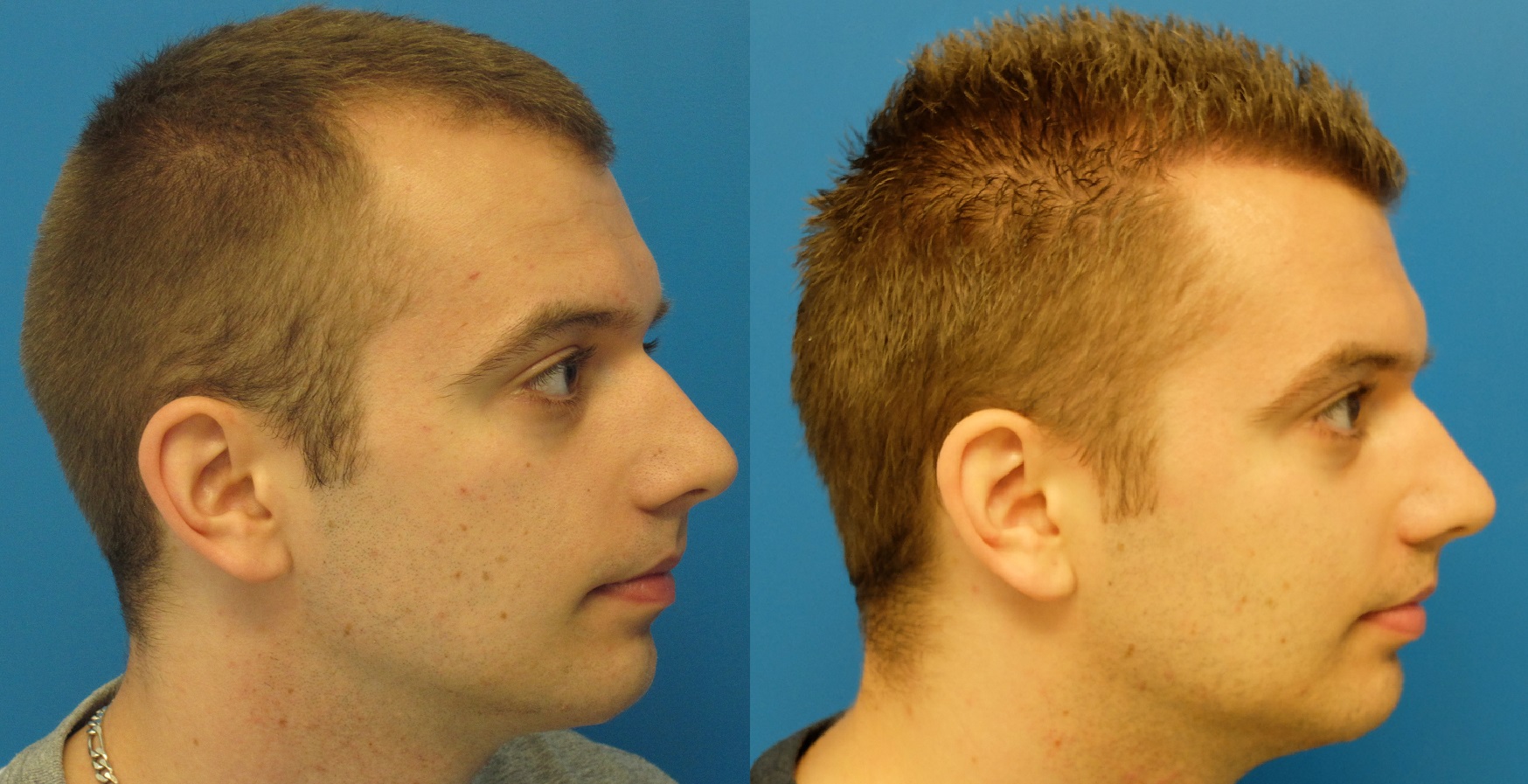
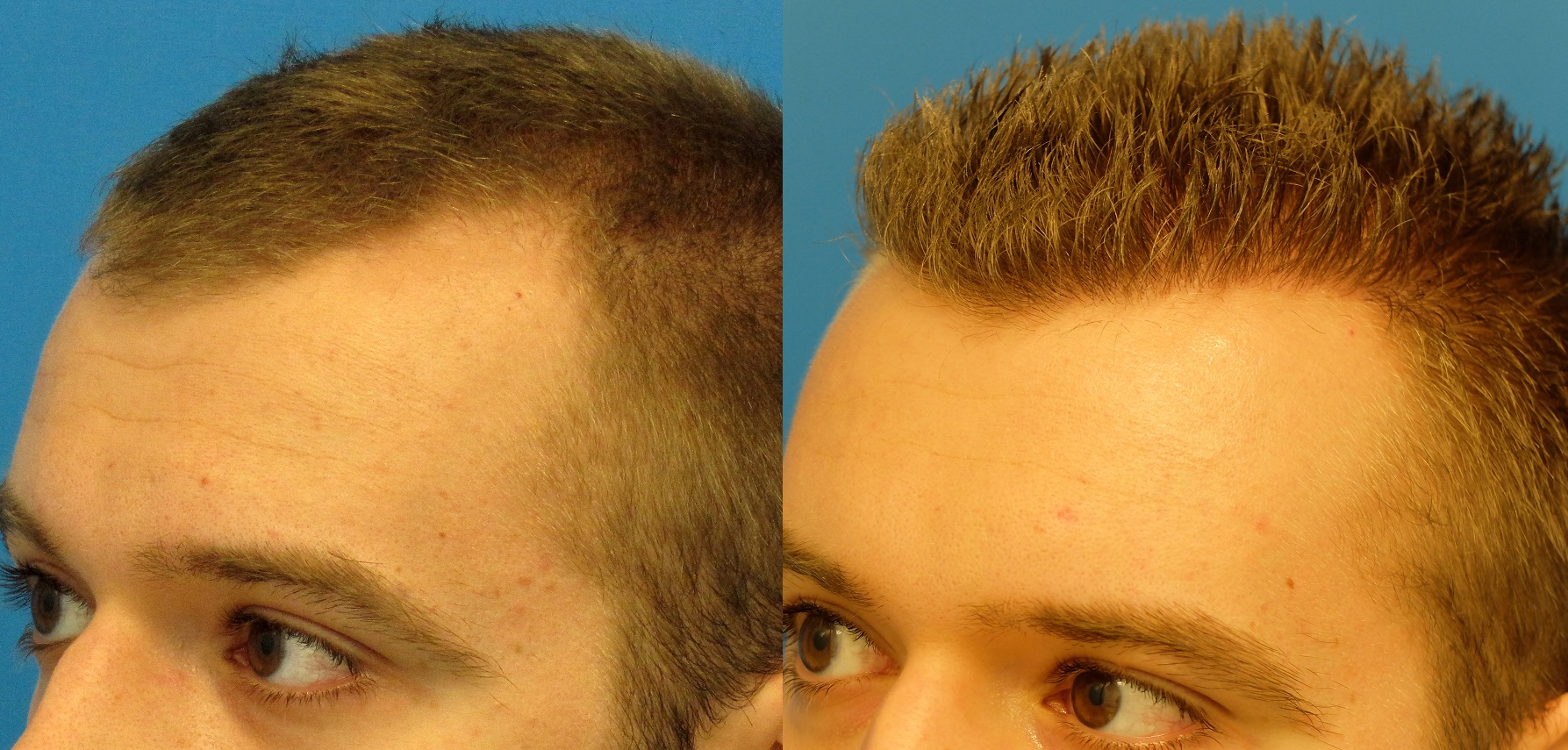
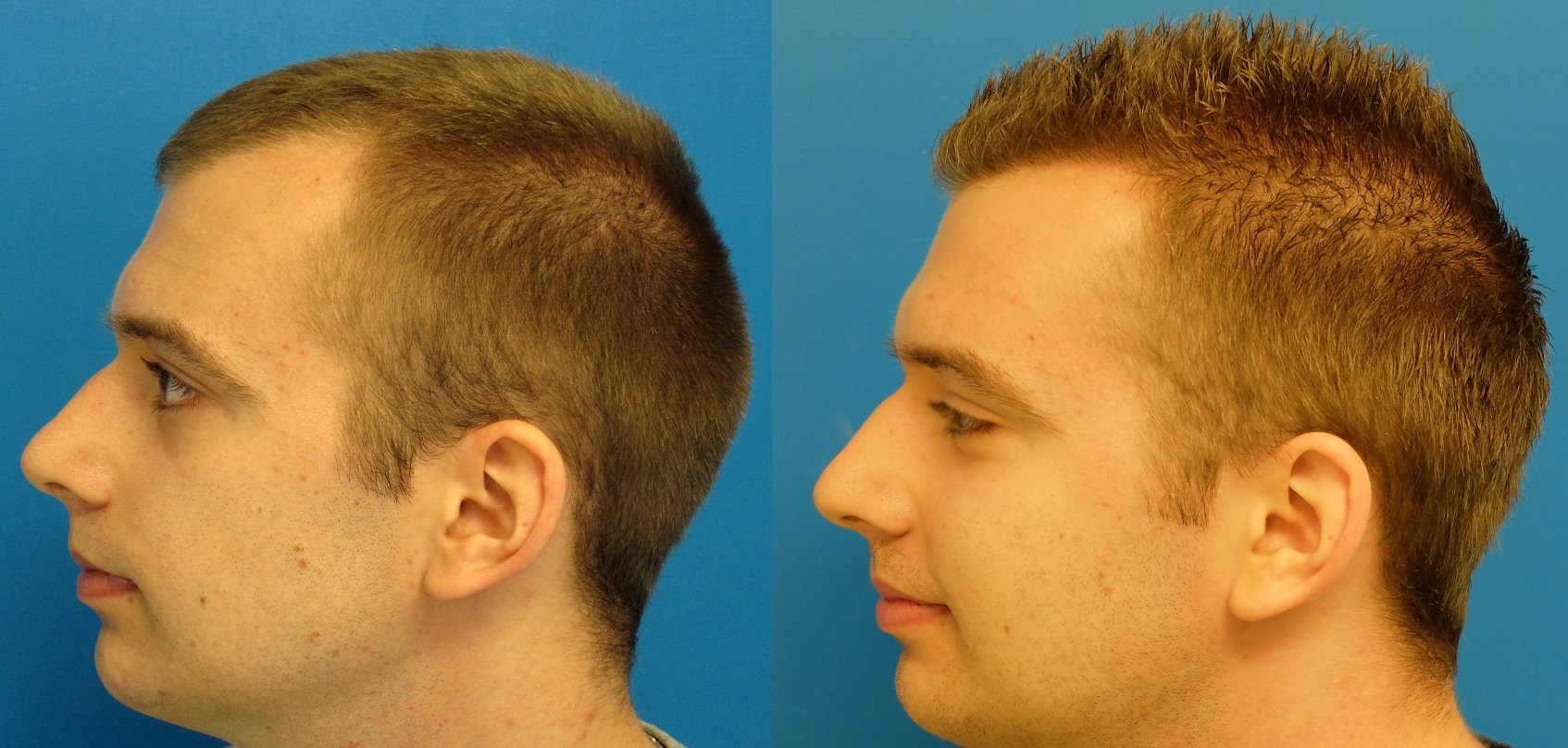
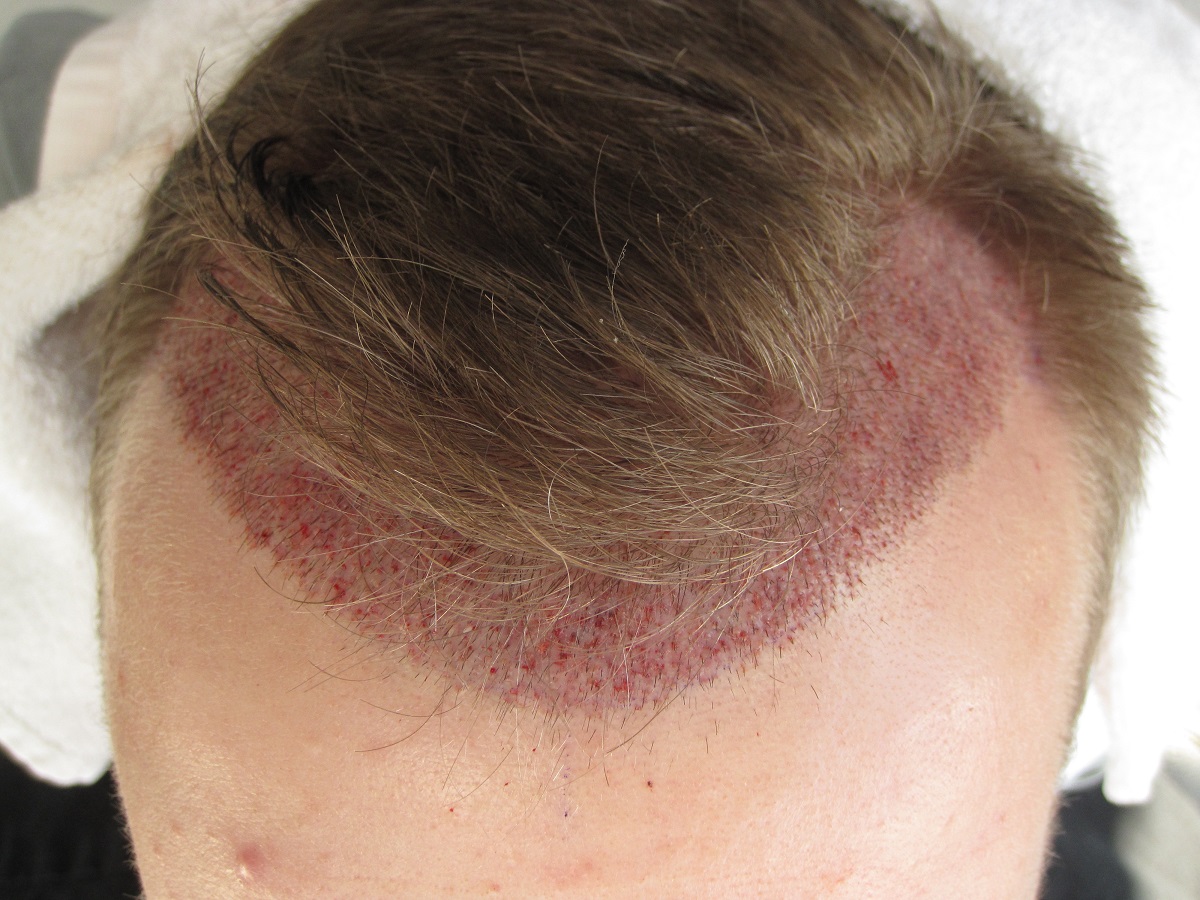
-
Here is an example from Milena's Lardi's patient at Beauty Medical. I took these shots myself where the larger image shows the result, If I recall, at about a year and a half or so. The second image was six months later after it had finished fading.


-
There is NO scientific evidence that PRP does anything more than empty your wallet. There may be anecdotal evidence once every several months but when you combine the numerous classic fuzzy photos that purport to show a result it becomes obvious that there is no real evidence to back this up. I mean, we're talking about thickening one's hair by injecting blood plasma into their scalp. From the beginning, it has been nothing more than kitchen sink science. Save your money.
-
Saturday the 31st still has a few openings available so if you are or will be in the Los Angeles area this is a great opportunity to speak with our H&W representative. Call now, 1.800.859.2266 or email info@hassonandwong.com.
-
Marchin872,
If you want SMP into the top of your scalp where the grafting work is being done then your planned time frame should be ok but I personally would feel better giving it a full six months. Same goes for the donor zone if you are hoping to fill in any FUE scarring but it is not a guarantee that the scars will take the ink very well. Sometimes scar tissue takes SMP well, sometimes it doesn't.



Could I please ask for a graft number estimate?
in Hair Restoration Questions and Answers
Posted
Always look at it like this. It's better to be prepared to get more and wind up needing less than the other way around. As Nick said, it's better to do this once if possible rather than continuing to chase the density you were after in the first procedure.
Now that you have a stronger idea of what you might need you can better search for the right doctor for you.
Good luck!